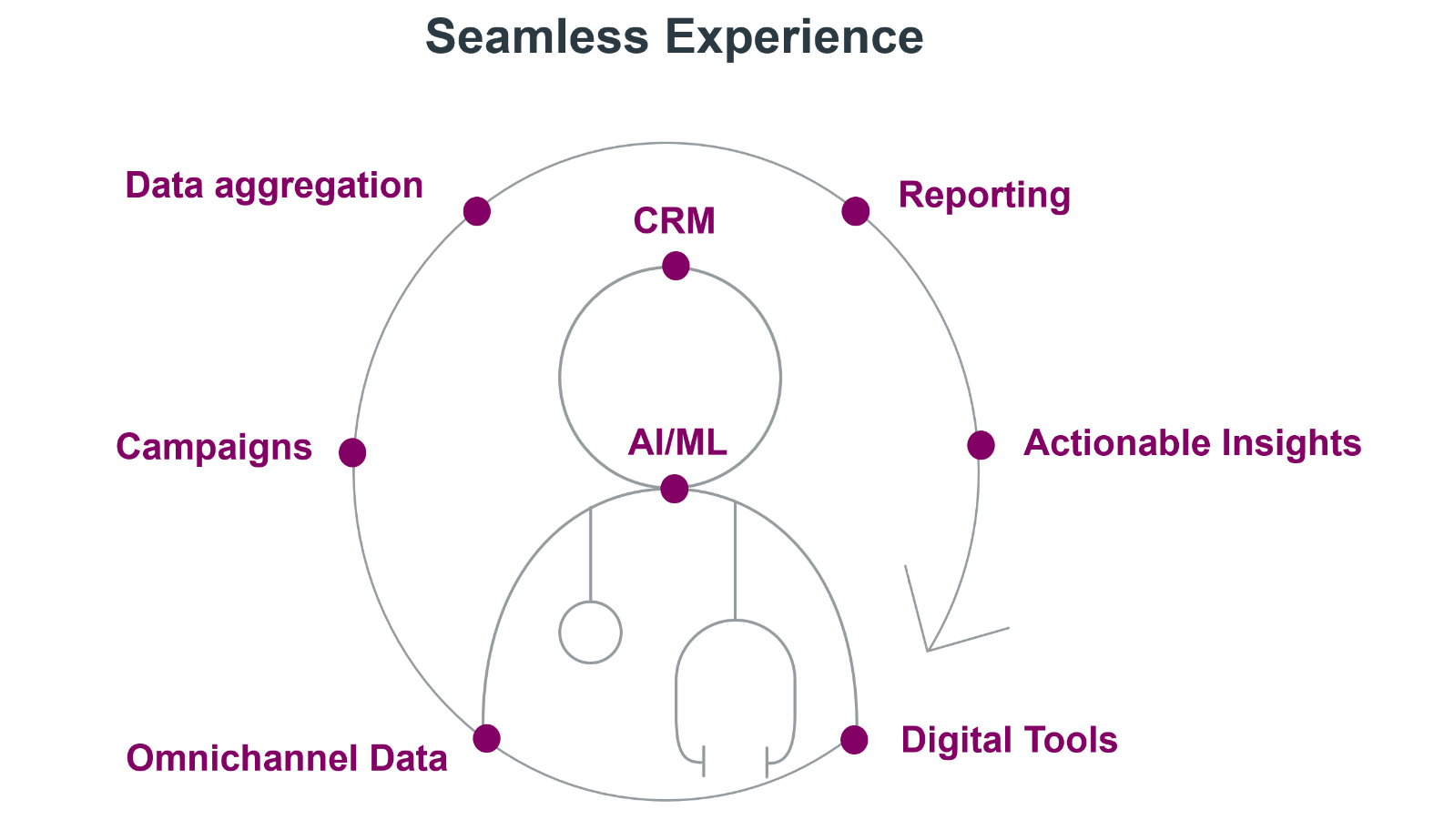











Life Sciences organizations are looking past the current state of their data collection and are recognizing the need to evolve their reporting capacity. The slowdown of face-to-face interactions resulting from COVID-19 drove companies to rapidly pivot and embrace multi-channel modes of communication with their customers.
This change occurred faster than many in the industry were ready to handle. New systems were implemented and as a result, an enormous amount of data was generated. But the bulk of it was unconnected. Most life sciences companies were not prepared for the opportunity to get the insights from the data that can help maximize their return in the face of constantly changing market conditions.
How can you get your information management, business rules, and reporting unified and integrated into a scalable business intelligence platform?
As professionals in BI and digital strategy, We have seen a lot of companies experience drawbacks with traditional (outsource, upgrade, or build) approaches to solve their BI needs.
The need to import and export, curate, clean, and transform data to transport it from one system to another is cumbersome and time consuming. What was lacking are systems that are designed to manage vast amounts of data, can orchestrate these connections to provide a single source of truth, and unlock the potential for an organization to answer complex business questions.
We have seen plenty of traditional systems designed to suit specific users. For example, a report built to meet the needs of commercial operations that did not deliver what marketing required resulted in weeks of back-and-forth with an outsourced provider to create a new report. The rapidly shifting landscape we’re currently witnessing requires a system that easily caters to a diverse set of users by providing self-serve features. This empowers end users to take a hands-on approach to tailor their reporting without added upstream or downstream processes saving time, cost, and resources.
Finally, one of the most important requirements, and one that we have heard time and time again, is the need for a solution that provides users with actionable insights. Analysts want their reporting to evolve from just seeing data tables or charts, wasting time interpreting and understanding, to suggestions that can provide the “next best action”. Predictive and prescriptive capabilities are now more than just a nice to have; they are a necessity.
Beyond that, it has become evident that the traditional reporting methodologies do not transfer well to predicting HCP behavior. We strongly believe that companies that want to be at the forefront of the industry need to obtain a life sciences-specific reporting solution, that is, built with life sciences AI/ML methodologies at its core. When combined with access to multiple data assets, a robust and meaningful solution will provide actionable insights for its users.

If you want to know more about how IQVIA can help you rethink your commercial strategies and reporting, please click the button to contact us or book a demo.
This blog series aims to provide insights to questions and challenges faced by life sciences professionals.

